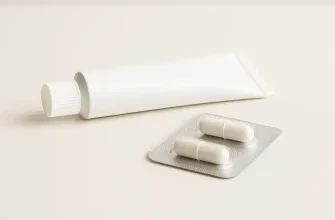DHEA cream is a topical product containing the hormone dehydroepiandrosterone (DHEA). It is usually made from wild yam extract, which is converted into DHEA by the body. DHEA is a precursor for various hormones and is believed to support overall well-being and hormone balance. The cream is typically applied to the skin for absorption.
What is DHEA Cream used for?
As we age, our DHEA levels tend to decline, leading to various health issues. However, incorporating a DHEA cream into your skincare routine can offer numerous benefits. Let’s explore five notable advantages of using a DHEA cream:
- Promotes youthful skin: As a precursor to estrogen and testosterone, DHEA plays a crucial role in maintaining collagen levels, skin elasticity, and hydration. Applying a DHEA cream can help combat the signs of aging, such as wrinkles, fine lines, and sagging skin.
- Enhances libido: DHEA is known to support sexual health and desire. By boosting DHEA levels through a cream, individuals may experience an increase in libido and sexual satisfaction. This can be particularly beneficial for those going through menopause or experiencing hormonal imbalances.
- Supports bone health: Beyond its impact on skin and sexual health, DHEA also contributes to maintaining bone density and strength. It aids in the absorption of calcium, crucial for preventing osteoporosis and fractures. A DHEA cream can provide systemic benefits, offering bone support to the whole body.
- Improves mood and well-being: DHEA is often referred to as the “feel-good hormone” as it plays a role in regulating brain chemicals like serotonin and dopamine. By using a DHEA cream, individuals may experience a lift in mood, reduced anxiety, and improved overall well-being.
- Supports weight management: DHEA has been linked to metabolic functioning and body composition. It helps regulate fat and sugar metabolism, potentially aiding in weight loss and preventing excessive weight gain. Incorporating a DHEA cream into a healthy lifestyle can provide additional support for weight management efforts.
Side effects of a DHEA Cream
While DHEA plays a vital role in hormone production, it’s essential to be aware of its potential side effects. Before incorporating a DHEA cream into your routine, take a look at this list of possible adverse effects:
- Hormonal imbalances: One of the most common side effects of DHEA cream is the disruption of hormonal balance. DHEA is a precursor hormone that, when applied topically, can convert to other hormones such as estrogen or testosterone. This conversion may lead to an imbalance in hormone levels, causing issues like acne, mood swings, or even hair loss.
- Skin reactions: Using a DHEA cream can sometimes cause skin irritation or allergic reactions. These can manifest as redness, itching, burning, or swelling at the application site. It’s important to test a small area of skin before fully applying the cream to rule out potential sensitivities.
- Increased blood pressure: Some individuals may experience a rise in blood pressure when using DHEA cream. Elevated blood pressure can be a concerning side effect, especially for those with hypertension or cardiovascular issues. Regular monitoring is crucial to identify any significant changes in blood pressure levels.
- Digestive issues: DHEA cream may potentially cause gastrointestinal disturbances in some individuals. These can include symptoms like abdominal discomfort, bloating, diarrhea, or nausea. If you experience any persistent or severe digestive issues, it’s best to discontinue the cream and consult a healthcare professional.
- Changes in cholesterol levels: DHEA is known to affect lipid metabolism, which can result in changes to cholesterol levels. Some studies have suggested that DHEA supplementation, including topical application, may lower high-density lipoprotein (HDL) or “good” cholesterol levels in certain individuals. Monitoring cholesterol levels regularly is recommended for those using DHEA cream long-term.
- Hormone-related conditions: DHEA cream may not be suitable for individuals with certain hormone-related conditions, such as breast cancer, prostate cancer, or endometriosis. It’s crucial to consult a healthcare professional before using DHEA cream, especially if you have a history of these conditions or any other hormone-related disorders.
How to Use a DHEA Cream
DHEA cream is a topical application of this hormone, often used by individuals seeking to supplement their DHEA levels. If you’re considering using a DHEA cream, here’s a guide to help you properly use it:
- Choose a High-Quality DHEA Cream: Start by selecting a reputable brand that offers a high-quality DHEA cream. Look for one that has undergone rigorous testing to ensure purity and potency. It’s always a good idea to consult your healthcare provider for recommendations.
- Read the Instructions: Carefully read the instructions provided by the manufacturer. Every DHEA cream may have specific guidelines for usage and dosages, so make sure you understand them thoroughly.
- Prepare the Application Area: Before applying the DHEA cream, clean and dry the area where you plan to apply it. Make sure the skin is free of any oils, lotions, or other products that may interfere with absorption.
- Measure the Appropriate Dose: DHEA creams typically come with pre-measured dosages. Squeeze the recommended amount of cream onto your fingertips or directly onto the area of application. Follow the provided guidelines for the correct dosage.
- Apply the Cream: Gently massage the cream onto the skin in a circular motion. Pay attention to areas with thin skin, such as the inner arms, thighs, or behind the knees. Massage until the cream is fully absorbed.
- Follow the Recommended Schedule: DHEA creams are typically applied once or twice daily. Follow the recommended schedule indicated on the product packaging or as advised by your healthcare provider. Consistency is key to achieving the desired results.
- Monitor your Body’s Response: Pay attention to any changes or reactions you may experience after using the DHEA cream. If you notice any unusual symptoms or side effects, consult your healthcare provider immediately.
- Be Patient and Give it Time: It’s important to remember that individual responses to DHEA cream may vary. It may take some time before you notice any noticeable effects. Consistent use over several weeks or months may be needed to achieve desired results.
- Regularly Assess DHEA Levels: It’s advisable to periodically assess your DHEA hormone levels through blood tests. This will help you determine if the cream is effectively supplementing your body’s natural DHEA production. Discuss the results with your healthcare provider for any necessary adjustments.
Remember, while DHEA cream can potentially offer benefits, it’s essential to approach its usage with caution and under professional guidance.









